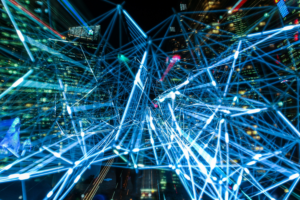By Jonathan Huie (LinkedIn: https://www.linkedin.com/in/huiej)
On September 28, 2018, in an ongoing intellectual property (IP) squabble between Apple and Qualcomm[1], an administrative law judge at the US International Trade Commission (ITC or Commission) found that Apple infringed one of Qualcomm’s patents.[2] At the ITC, if there is a finding of infringement, an exclusion order follows (there is no monetary remedy).[3] Despite this, Administrative Law Judge Thomas Pender recommended that “public interest factors weigh against issuing a limited exclusion order.”[4] This is an extraordinary outcome for one of the most closely watched ITC Section 337 investigations in recent memory.[5] Notwithstanding this rare result, the ITC remains a powerful tool for companies to exclude unfair competition in the United States.
Judge Pender’s decision is the latest ruling in the battery of lawsuits Qualcomm has filed against Apple in an ongoing global IP dispute concerning chips used in the iPhone.[6] Apple previously used Qualcomm’s chips, but has since switched to only Intel-based chips.[7] Qualcomm has pursued multiple avenues, including using the ITC, in an effort to enforce its IP, but also to seek leverage against Apple in response to its decision to exclude Qualcomm’s chips from the iPhone.[8]
The ITC is a quasi-judicial federal agency authorized under 19 U.S.C. § 1337 to conduct investigations into unfair trade practices that damage American industry, including the importation of articles that infringe on copyright and patent protections.[9] These investigations are administrative proceedings before an administrative law judge who, after a formal hearing, will issue an initial determination and recommended remedy that is reviewable by the Commission.[10] Depending on whether the Commission accepts the judge’s initial decision and recommendation, it can then issue a remedy consisting of a cease & desist order. The Commission may also issue limited or general exclusion orders depending on the difficulty in identifying “the source of infringing products.”[11] Lastly, the Commission’s decision is subject to Presidential approval, and, where necessary, reversal.[12] However, simply put, under the statute, where there is a finding of infringement, an exclusion order barring the infringing articles from entry into the country must follow.[13]
Section 1337, however, provides certain exceptions to this general rule. Before issuing an exclusion order, the Commission must consider whether such an order is in the public’s interest, specifically circumstances where the “public health and welfare, competitive conditions in the United States economy, the production of like or directly competitive articles in the United States, and United States consumers” are concerns, a finding of infringement does not automatically result in infringing product exclusion from the U.S.[14] Yet this is a high bar to meet – under the statutory language of Section 1337, if infringement is found, an exclusion order must follow.[15] Indeed, this has proven true in most other cases involving products that are not so ingrained in the collective consciousness as Apple’s iPhone. For example, Canon obtained an exclusion order barring the importation of unauthorized recycled printer cartridges.[16] Likewise, another company, Litepanels, obtained an exclusion order in a case concerning LED photographic lighting devices.[17] In each case, both companies were able to successfully exclude infringing products from the U.S. market using the ITC’s authority.
Apple fans may, however, want to delay on celebrating continuing iPhone sales in the U.S. because, as noted above, Judge Pender’s initial determination and recommended remedy are not final. The Commission still must decide whether to adopt the initial determination and recommended remedy.[18] If the Commission finds that there is a Section 337 violation and issues a remedy, that decision is reviewable by the President, who, at his discretion, can overturn any remedy within sixty days.[19] Presidential intervention like this is rare, but was exercised in 2013 when President Obama reversed a ban on iPhones that infringed Samsung’s patents.[20] Company executives and in-house counsel should, however, know that the ITC remains a useful and powerful tool to exercise IP rights and to manage competition because such public welfare exceptions are rarely ever met.[21]
[1] Susan Decker, Qualcomm Loses First Round in Apple Patent Fight at ITC, Bloomberg (Sept. 28, 2018), https://www.bloomberg.com/news/articles/2018-09-28/qualcomm-loses-first-round-in-apple-patent-fight-at-itc.
[2] Certain Mobile Electronic Devices and Radio Frequency and Processing Components Thereof, Inv. No. 337-TA-1065, Notice of Final Initial Determination and Recommended Determination (Sept. 28, 2018) (Final) (USITC publication number currently unavailable). A public version of the Initial Determination is expected within thirty days.
[3] 19 U.S.C. § 1337(d)(1) (2012).
[4] Id.
[5] See generally Decker, supra note 1.
[6] Id.
[7] Id.
[8] Id.
[9] § 1337.
[10] Understanding Investigations Of Intellectual Property Infringement And Other Unfair Practices In Import Trade (Section 337), USITC, https://www.usitc.gov/press_room/us337.htm (last visited Oct. 17, 2018).
[11] § 1337(d)(2), (f).
[12] § 1337(j)(2).
[13] § 1337(d)(1).
[14] Id.
[15] Id. ([The Commission] “shall direct that the articles concerned, imported by any person violating the provision of this section, be excluded from entry into the United States”).
[16] Certain Toner Cartridges and Components Thereof, No. 337-TA-829, USITC Pub. 4553 (Nov. 2017) (Final).
[17] Certain LED Photographic Lighting Devices and Components Thereof, No. 337-TA-804, USITC Pub. 4539 (July 2015) (Final).
[18] See supra note 6.
[19] § 1337(j)(2).
[20] Connie Guglielmo, President Obama Vetoes ITC Ban On iPhone, iPads; Apple Happy, Samsung Not, Forbes, (Aug. 3, 2013), https://www.forbes.com/sites/connieguglielmo/2013/08/03/president-obama-vetoes-itc-ban-on-iphone-ipads-apple-happy-samsung-not/#65b226d78c3d.
[21] See supra notes 11, 12 for discussion of public welfare exception elements.


